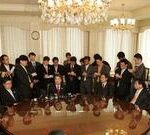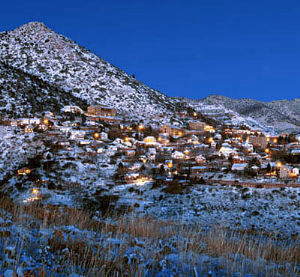It has been said that Jesus was a carpenter, and so is my father. Carpenters are like artists; they are born to do the work, and they usually never stop working on a project, even after retirement.
My father, Jerome Stamberger, retired from the profession of carpentry in the 1990s, having worked as a professional since the age of 18, first in Korea during the Korean War. His building of a bridge enabled American soldiers to escape, thus earning him just one of his various medals.
Back in the states, he settled into civilian life, and began working, first as an apprentice, serving five years apprenticeship, then he became a union carpenter. He eventually worked up to the title of master carpenter.
Throughout his forty-six years of extremely hard, laborious work, he learned all facets of the trade, perfecting his craft. He was in big demand as a carpenter in New York City. He recently received his fifty-year, union member pin.
In this interview, my father recalls how he worked at the World Trade Center, the Verrazano-Narrows Bridge, and the differences in carpentry from his beginnings in the 1950’s, up to present time.
L.S. You have worked extremely hard all your life. Was it ever easy?
J.S. When I first started, it was outdoors. Outdoor vs. indoor carpentry is rough, depending on the weather.
L.S. How has Carpentry Changed?
J.S. Mainly the materials used, and the man power. On the sky scrapers in New York, we used to encase all the steel with cement, they used to call that technique “goulash”. That was a lot of work, and they needed big crews of carpenters and laborers. You had what they called “gangs,” different gangs of workers to do different jobs.
L.S. Did the type of materials make a difference in regard to durability and manpower?
J.S. Definitely. The hard jobs were all reinforced, reinforced concrete buildings, and steel rebars. I was in the column gang, doing outside and interior columns too. There were various crews, from the electricians, to wirer’s, then the next crew would come in. After our job was done, the decking crew came in to finish the deck to the columns. This gave a lot of guys and companies jobs.
L.S. What did your job entail at the World Trade Center?
J.S. I did alteration work, throughout the World Trade Center.
L.S. What’s one job you wish you never did?
J.S. Back in the days before we knew any better, they used to spray asbestos on steel, to fireproof it. We would scrape the asbestos away, so we could “shoot” the steel track into the ceiling slab. Who knew the asbestos could give us lung cancer! We had it all over our clothes, and it was all over the floor.
L.S. Didn’t one of your friends die from this?
J.S. Our old neighbor Russ did, it’s a shame. But he didn’t work with me, he was a sheet metal worker. I was lucky.
L.S. What was your absolute worst job?
The worst job I ever had was when I first started, I was working in the sewers. The money was fantastic, but what a dirty job that was, putting up wood forms for concrete.
L.S. I can imagine!
J.S. Not only dirty, but the smell. You can never imagine that! I had to work in rain gear, a helmet and boots. That was a tough, back-breaking job.
L.S. Why did you do it?
J.S. I had a wife and children to support.
L.S. You also worked on the Verrazano-Narrows Bridge. What was that like?
J.S. Another tough job, but different.
L.S. Was this one of the more dangerous jobs you have undertaken?
We put the forms for cement on the road work. We had to sit on boxes because there was no room to stand on the bottom part of the bridge. We worked off planks, that went from beam to beam. Between the planks and the water below, it was over two hundred feet, down. Our only safety equipment was an eight foot belt with a nylon line, attached to a safety cable.
L.S. Did you work with the same people throughout your career?
J.S. My last forty years there were many familiar faces because I only worked for three companies that entire time. When our job was finished, the carpenter usually got laid off, then would go back to the union hall to get more work. I always had work.
L.S. That’s because you were an extremely talented, hard worker. Anything you miss about working?
J.S. I miss many of the friends I’ve made over the years.
Links:
Verrazano-Narrows Bridge
http://www.mta.info/bandt/html/veraz.htm




